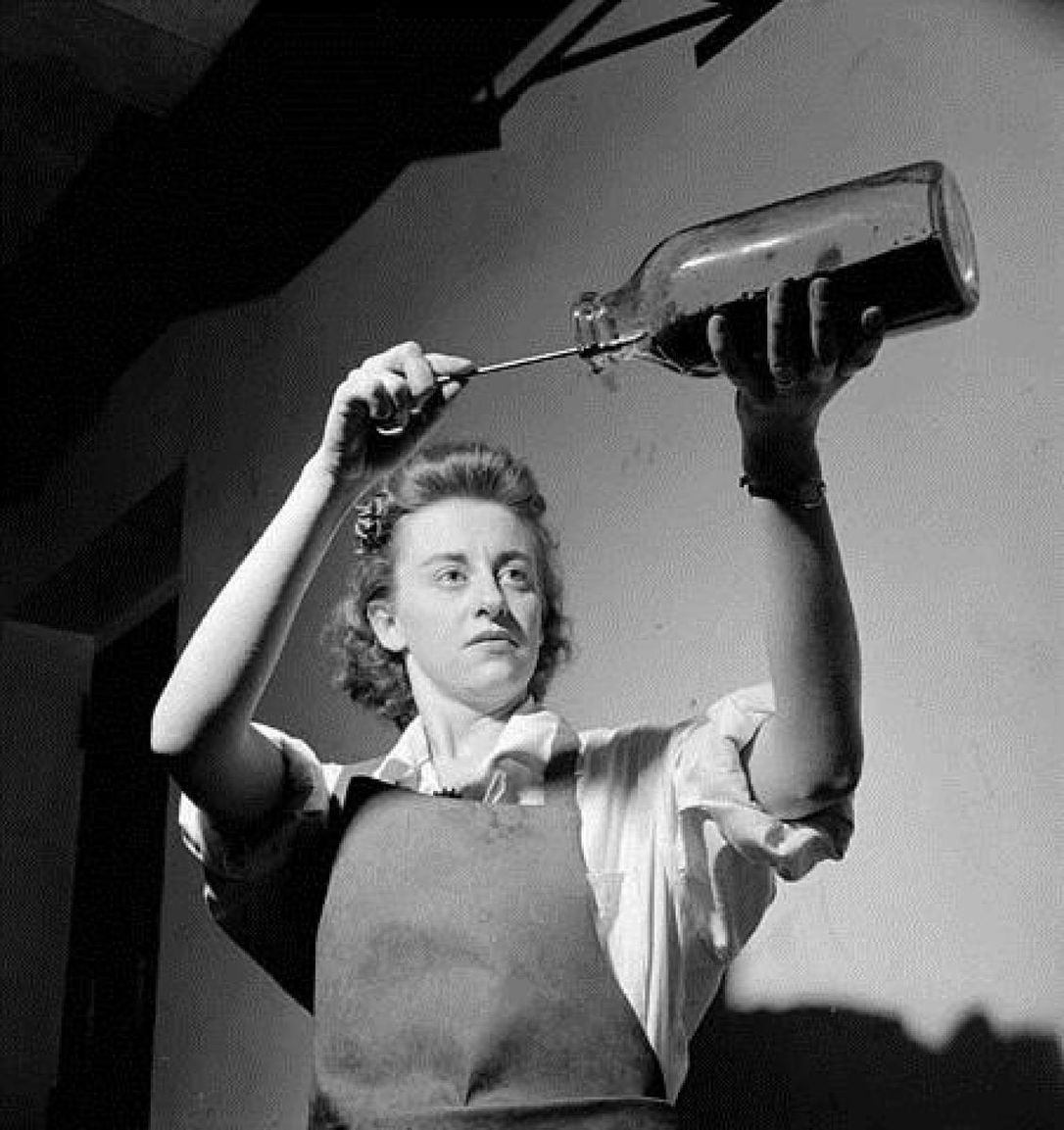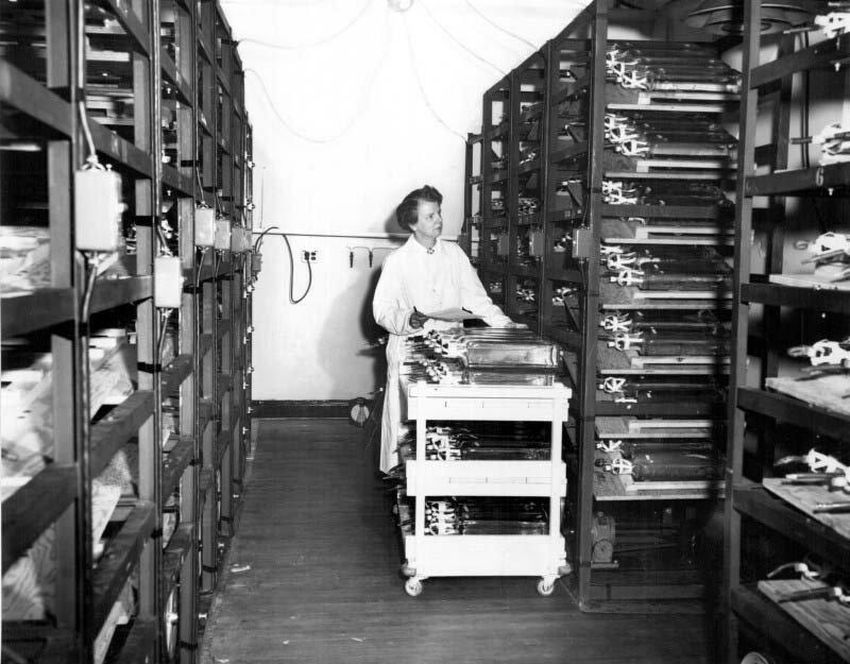
It took fluid in glass vials, monkey tissue and a gentle rocking motion to make a Canadian research scientist a heroine and put her laboratory on the international pharmaceutical map.
It 1952 the worst polio epidemic was spreading across North America. In Canada, the disease peaked in 1953 with 9,000 cases and 500 deaths, the worst national epidemic since the 1918 influenza pandemic.
However, Dr. Jonas Salk, an American biologist and physician specializing in the study of virology, experimented with inactivated poliovirus cells to generate the first successful killed-virus polio vaccine.
Salk’s dilemma? How to mass produce the vaccine. Tucked inside the Department of Hygiene at the University of Toronto, a small lab had discovered that the polio virus grew rapidly on monkey kidney tissue in a synthetic liquid form. A PhD fungus specialist named Leone Farrell managed to adhere the tissue to the inside surface of a five-litre bottle. Then, she continuously agitated the bottles to allow the medium to generate cell production.
Dr. Farrell’s system became known as “the Toronto technique.”

The next year, 1953, the procedure yielded 3,000 litres of live virus for Dr. Salk’s polio vaccine trials. Twice a week for nearly two years, a vehicle arrived at the U of T lab to collect the virus-filled bottles packed in dairy cans for shipment to the U.S. There, the virus was killed for Salk’s vaccine production.
On April 12, 1955, the medical world announced that the Salk vaccine had been effective in almost 90 per cent of the tests on children. Mass immunization began in the U.S., Canada and Finland.
Dr. Salk became an international celebrity. And the U of T’s campus production facility, Connaught Laboratories, seemingly overnight became a bio-centre of excellence. In truth, Connaught had a tradition of success in the field dating back to 1914. And the best part was Connaught was a financially self-supporting publicly owned lab.
It would continue its trailblazing record – contributing to medical breakthroughs and developing affordable treatments and vaccines against killer viruses – well into the 1980s.
Then, it was sold to private investors outside Canada!
That’s right. If you’re furious that Canadians are not receiving COVID-19 vaccines fast enough or in large enough quantities, don’t blame Justin Trudeau’s Liberals.
In fact, you should blame Pierre Trudeau and Brian Mulroney. In the 1970s, the U of T sold Connaught for $26 million to the Canada Development Corporation, an agency Pierre Trudeau’s Liberal government created to promote private Canadian business.
Then in 1985, Brian Mulroney’s Progressive Conservative government privatized Connaught completely, selling it to Sanofi Pasteur, a large pharmaceutical enterprise in France. The transaction infuriated both sides in House of Commons debate in 1989.
“What Canadian industries is [Prime Minister Mulroney] not prepared to sacrifice?” exclaimed Liberal critic James Peterson.
“Protectionism puts a Wall of China around Canada,” replied Mulroney.
If you’ve never heard of Connaught Labs, you might be surprised that their successes are legion. From the outset, their objective was pursuing human health, not profit. During the diphtheria epidemic of 1913, Toronto doctor John FitzGerald learned that children were dying when treatment was available in the U.S.; but at $25 per dose most families couldn’t afford it.
Soon after, FitzGerald created a diphtheria antitoxin with Connaught, and distributed doses across the country via public health clinics. Next, Connaught developed vaccines against tetanus, meningitis and typhoid at minimal cost and made them universally available.
If you thought Connaught had something to do with the development of insulin, you’d be correct. In 1921, the same Dr. FitzGerald invited Dr. Frederick Banting to Connaught’s farm site. They experimented with the production of a version of an extract using calf pancreas (sourced in local slaughterhouses).
A test patient at Toronto General Hospital’s diabetes ward, Leonard Thompson, 14, received the first human insulin extract; daily injections helped him live another 13 years when he died of pneumonia brought on by influenza. The next year, Connaught became the first laboratory to introduce insulin commercially. Then came blood plasma, penicillin and the anti-polio vaccine.
And were Connaught still a Canadian publicly owned facility, there’s no reason that development and distribution of a Canadian COVID-19 antidote wouldn’t have happened along the lines of the Pfizer, Moderna or AstraZeneca vaccines.
Sadly, it takes global pandemics and thousands of deaths to provoke remedial action in the public interest when pre-emptive planning was entirely possible. On Tuesday, Prime Minister Justin Trudeau announced the initiative that will see a National Research Council-owned facility in Montreal produce the made-in-Canada Novavax vaccine.
And that’s wonderful.
But shouldn’t we recognize and invest in innovation, such as Dr. Leone Farrell’s “Toronto technique” and publicly focused agencies such as Connaught Labs, instead of waiting for profit-motivated interests to fill the void, usually when it’s too late for the common good.
A great article Mr. Barris. We have a such a rich history in health science discovery as you alluded to in your article; mainly because of the brilliant medical researchers Canada seems to produce like Leone Farell, John Fitzgerald, Banting and Best, and many others. Unfortunately Canada has a history of squandering our human resources and innovation advantage in many fields; Aerospace(The Avro Aero), Radio Isotopes(Chalk River), and more recently, Articificial Intelligence.(Many have been recruited by Silicon Valley with promises of huge salaries and research budgets). To me the Vaccine Nationalism debate and our vulnerability to a global supply chain is the Canary in the Coal Mine to a much larger dependency we have on essential foreign made goods. Its a cautionary tale that doesn’t end with PPE, Ventilators, and Vaccines; it extends to much of what we buy in our daily lives that is made offshore; from shoe laces, and nails, to rare earth metals, and boots. What if we were to have a diplomatic spat or worse yet a war with a country like China down the road? Where would we get all these basics that like vaccines, we used to make in this country. In my mind the globalization of manufacturing by for profit companies looking to maximize shareholder returns has become an issue of national security for Canada. Vaccines is only the tip of the iceberg.